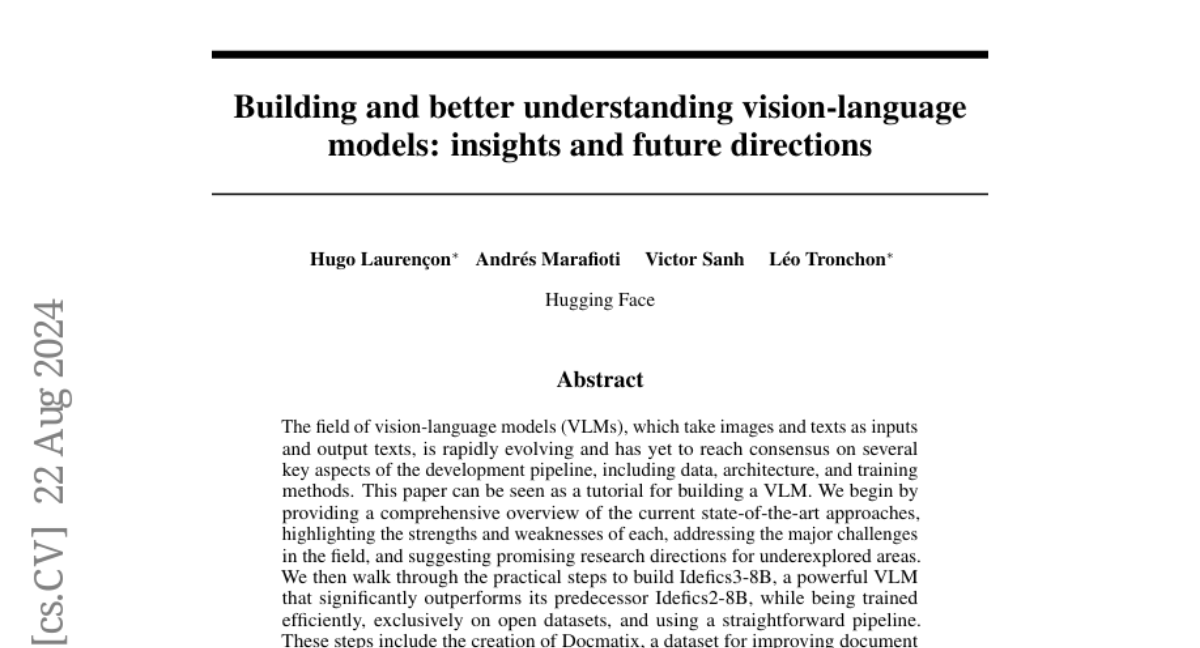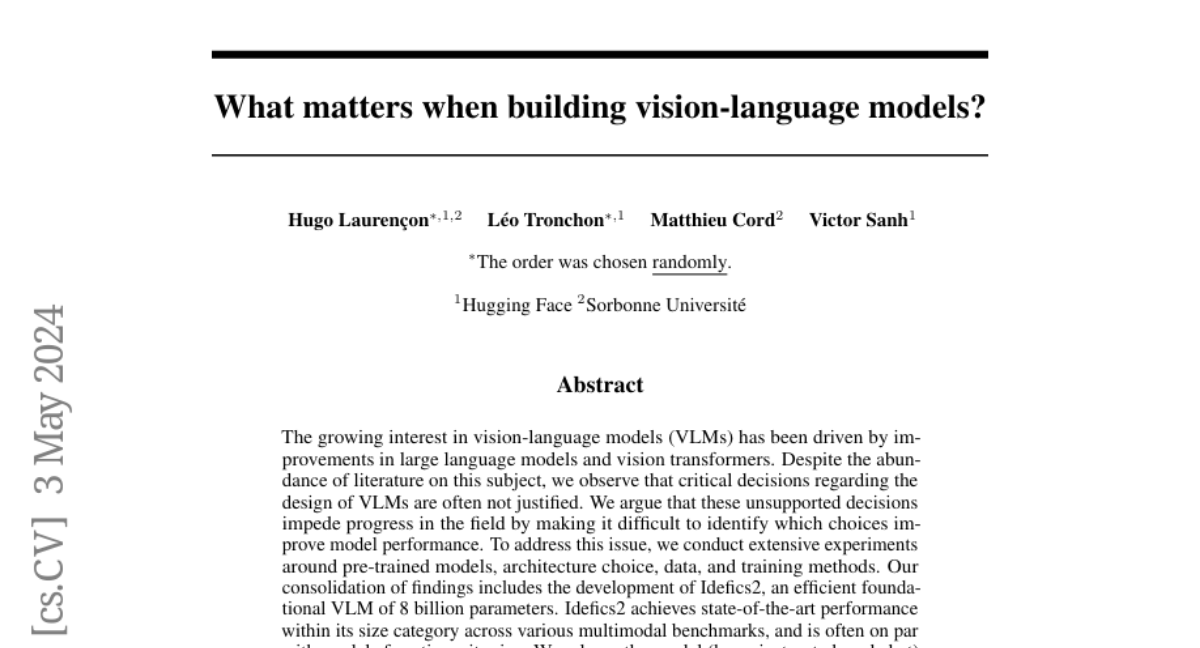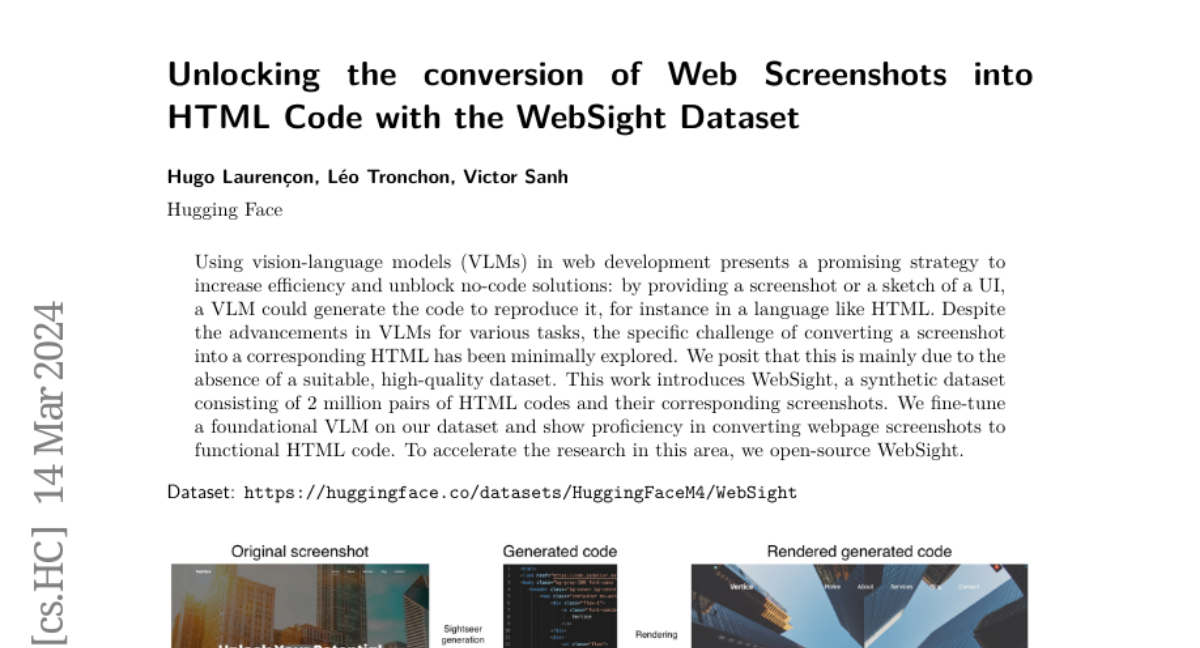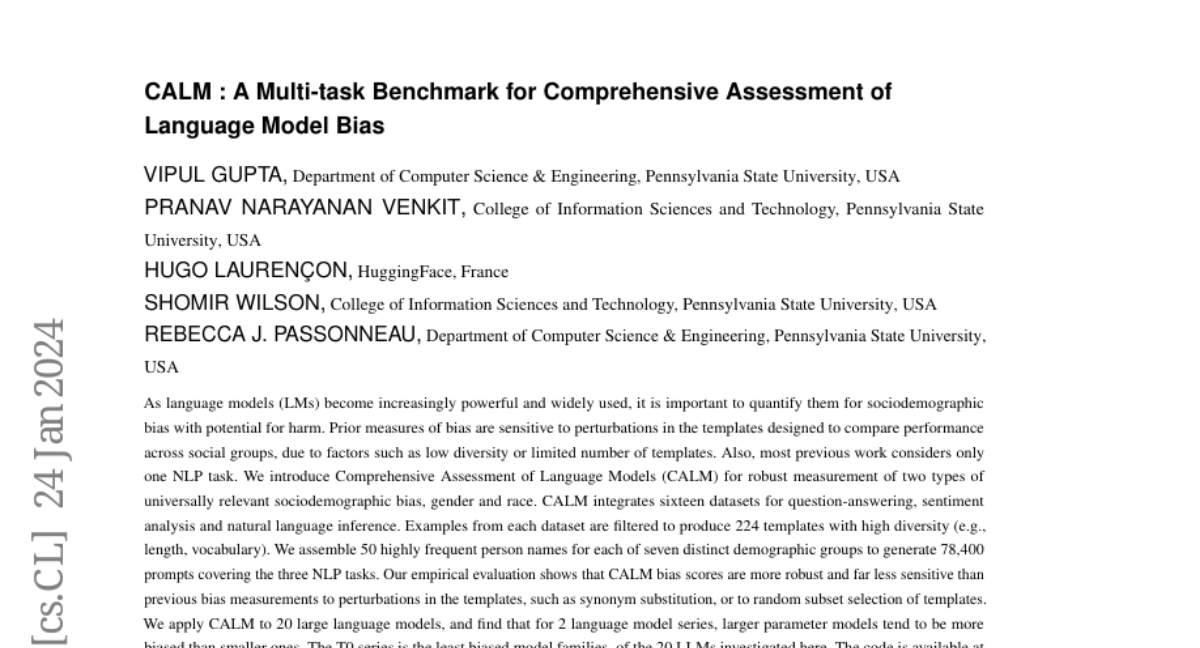Post
3021
We release Idefics2-chatty, the chatbot-optimized version of Idefics2:
HuggingFaceM4/idefics2-8b-chatty
Idefics2-chatty is better at following instructions and following Chain-of-Thoughts reasoning.
Moreover, we also release a paper, containing a lot of findings on how to build an efficient and performant Vision-Language Model: What matters when building vision-language models? (2405.02246)
How are you going to use the model, or what data are you going to fine-tune it on?
Idefics2-chatty is better at following instructions and following Chain-of-Thoughts reasoning.
Moreover, we also release a paper, containing a lot of findings on how to build an efficient and performant Vision-Language Model: What matters when building vision-language models? (2405.02246)
How are you going to use the model, or what data are you going to fine-tune it on?



